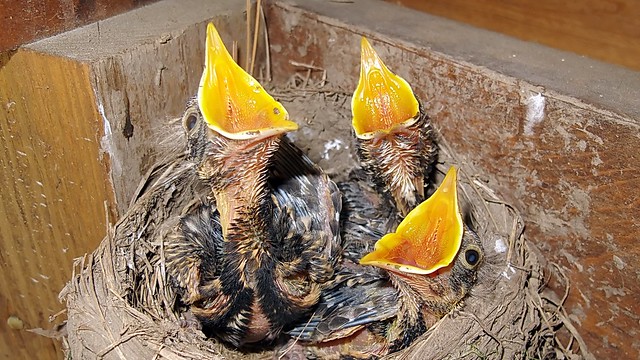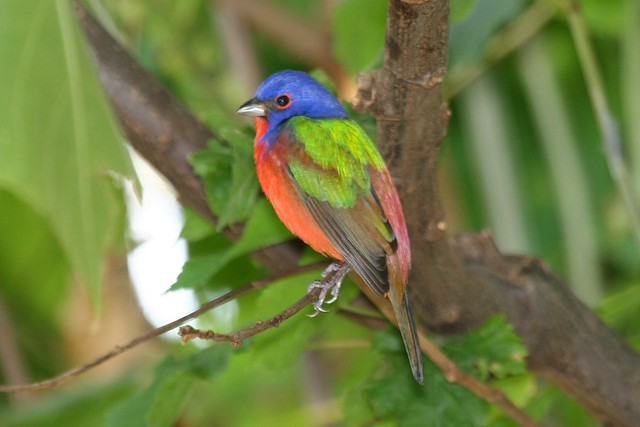Robin nest!
I was so excited to see an American Robin busy building her nest in our front shrub last month. When I was growing up, my parents always had birdhouses on our property — but I’ve never had the chance to see inside an active nest before!
I could see her flying in and out of the tree several times during the day, and I wondered about her placement choice. There’s not a lot of traffic at our front door (we often go via the garage), true. But I wondered about the bright porch light we leave on all night, which shines right into the shrub, pretty much at nest level. Early last week I taped a covering over one side of the fixture, so we still have the security of the light — but it shines much less brightly towards the nest.
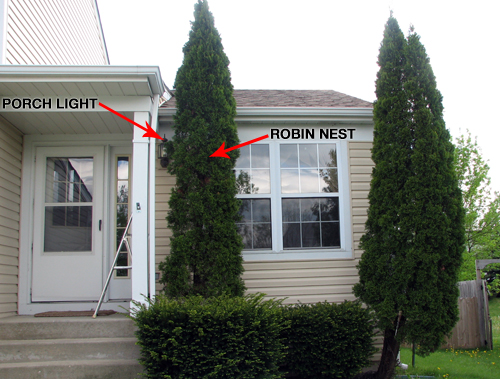
I first saw her sitting more or less constantly on the nest sometime in the middle of last week. Since then we have noticed that she doesn’t fly off if we use the front door. We can see her from inside the living room, if we crouch down to peek through the foliage.
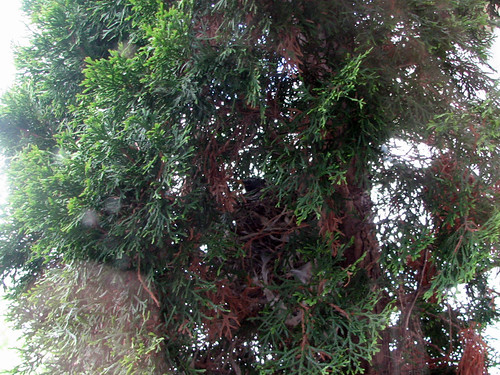
See her? She’s right in the middle. (Click to embiggen)
With my camera’s zoom I can get a little better view.
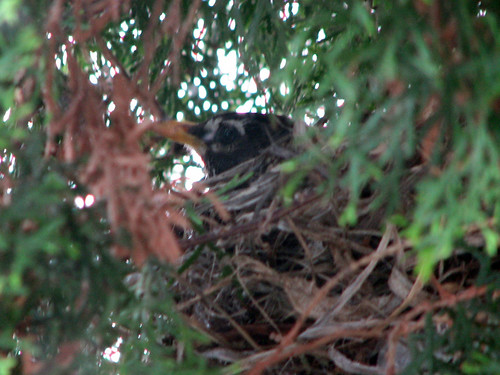
oh hai! (Click to embiggen)
Last week I registered the nest site with Cornell’s NestWatch, a citizen-driven nest-monitoring project. The site has instructions and tips for observing active nests, and participants are required to become certified (by completing an online quiz) before joining the project. There are also datasheets for the focal species, which includes the American Robin.
Yesterday afternoon I briefly checked the nest. The robin was still incubating when I came outside, and I could see her (once I crouched down).
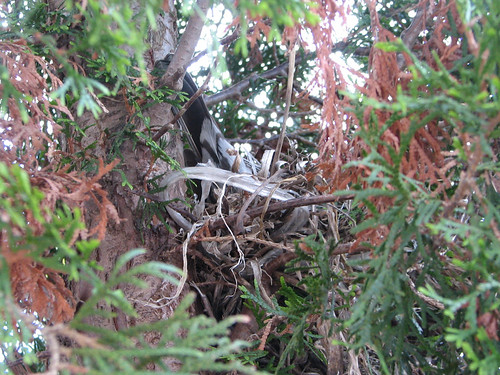
The underside of Ms. Robin’s tail. (Click to embiggen)
Soon after I started talking and fussing with my ladder, she flushed off. Four eggs are usual, but American Robins will lay 3-5. I reached over with my camera to take this photo inside the nest.
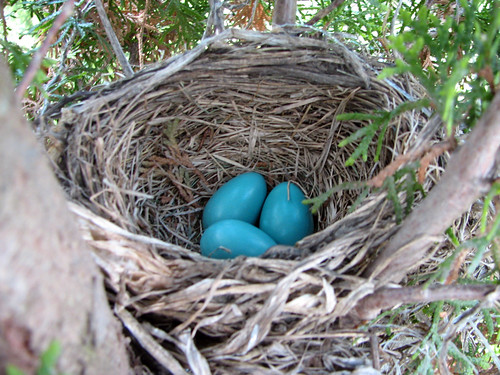
Eggs! (Click to embiggen)
The robin was back incubating within about 15 minutes. American Robins incubate for 12-14 days; I estimate the eggs were laid April 27-28 so there should be nestlings some time between May 9 and May 12.
I continued to follow the nest during the following weeks. For further reading: Teeny tiny baby American Robins!!! | Quick robin nest update | These birds have flown



